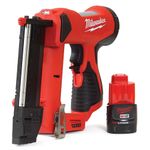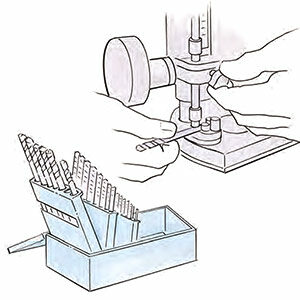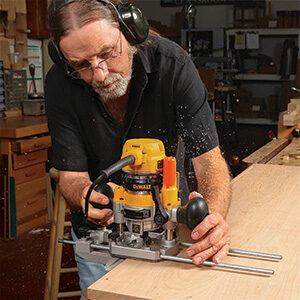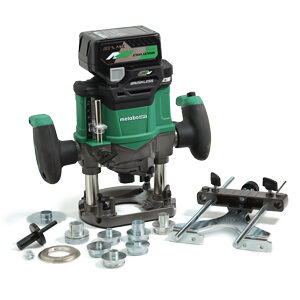Porter-Cable - Midsize Plunge Router 7529
Porte-Cable’s 2-hp plunge router features a variable-speed motor with micro height adjustment.
Midsize plunge routers, those in the 2-hp class, have enough muscle to tackle most tasks, yet they’re relatively easy to handle. Unlike a fixed-base router, a plunge router lets you lower the spinning bit straight down into a workpiece. That makes it a good choice for those who cut a lot of stopped grooves, dadoes, and mortises. So with that in mind, I gathered all eight of the midsize plunge routers on the market and gave each a thorough going-over.
I checked to see how fussy it was to turn the machine on and off, to change router bits, and to set the plunge depth. I looked at how much finger contortion it took to set the switch locks and the plunge-lock mechanisms. I also wanted to see how well the multiple-stop systems worked. I checked the handles for comfort, then measured each router for noise, vibration, and collet runout. And after all of that, I tested each router by running it through a sheet of plywood.
The large opening in the Porter-Cable’s base makes for easier bit changes. It has a second on/off switch on top of the housing, low vibration and the lowest noise level (tied with Makita). On the downside, runout is higher than on most of the other routers used, and the on/off switch takes some getting used to.
From 10/1/1999 issue by Lon Schleining:
Two-horsepower routers, plunge or plain, are selling fast these days. Porter-Cable just entered the game with the model No. 7529. This tool has just about everything you could ask for in a plunge router. It’s light enough to do handheld work but powerful enough to go into a table and be used with large-diameter bits.
The router has the familiar three-stop setup for plunge cuts. A microadjusting knob, for setting the bit height in a router table, makes precise adjustment a snap once you figure out how it works. The instruction manual seemed a bit fuzzy on this procedure. The arbor lock leaves you with only one wrench to lose instead of the usual two. The router comes with 1/4-in. and 1/2-in. collets.
The tool’s speed-control switches allow you to set the speed conventionally via a dial or to control it by squeezing the trigger. The electronics brings the motor up to speed smoothly and puts the brakes on when power is shut off.
The router’s plunge-cutting operation feels just right. There is plenty of spring pressure holding the router up but not so much that the plunge is stiff. The spring-loaded plunge-locking lever is easily locked and released with one finger.
The router is as vibration free as any I have ever used. All of the controls are easy to operate without removing your hands from the handles. The baseplate has a large cutout covered with clear plastic, so you can actually see what you’re cutting. This single router could replace all seven of the routers I now have in my shop.
Fine Woodworking Recommended Products

Festool Cleantec CT 26 E HEPA Dust Extractor

Festool DF 500 Q-Set Domino Joiner

Milwaukee M12 23-Gauge Cordless Pin Nailer























Log in or create an account to post a comment.
Sign up Log in